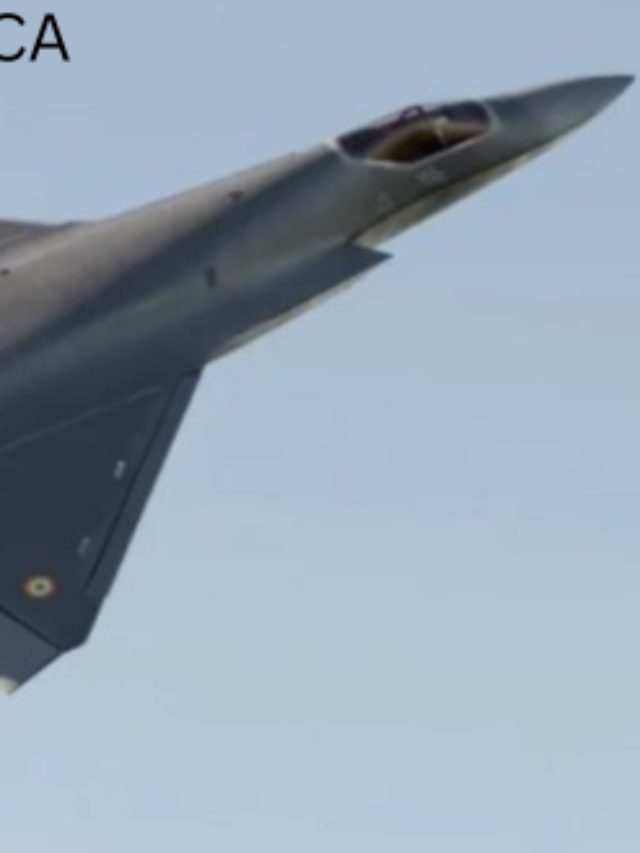Fighter Aircraft of the Indian Air Force

The Indian Air Force stands as one of the world’s largest and 4th strongest Air force in the world, after America, Russia and China. Over the years, it has strategically built a diverse fleet of fighter aircraft to ensure aerial superiority and defend the nation’s interests. This article delves into the various fighter aircraft operated by the Indian Air Force, highlighting their capabilities, roles, and contributions to India’s air defence.
Sukhoi SU-30MKI
The Sukhoi Su-30MKI, a variant of the Russian-made Su-30 series, stands as one of the most potent fighter aircraft in the Indian Air Force’s inventory. Acquired under a licence production agreement with Russia, the Su-30MKI combines exceptional manoeuvrability, long-range strike capabilities, and advanced avionics systems. Equipped with a powerful radar, precision-guided munitions,air to air missile, Brahmos supersonic cruise missile, Astra air to air missile, Rudram anti radiation missile and in-flight refuelling capaility, the Su-30MKI serves as a formidable asset for air dominance, aerial combat, and deep strike missions. Its integration of Indian and foreign technologies underscores the strategic partnership between India and Russia in defence cooperation.
Dassault Rafale
The Dassault Rafale represents the latest addition to the Indian Air Force’s fighter fleet, introduced to augment its combat capabilities. Procured under a government-to-government deal with France value of 16 Billion US dollar, the Rafale is a multi-role combat aircraft renowned for its agility, range, and advanced weapon systems. With its sophisticated avionics suite, including AESA radar and electronic warfare systems, the Rafale excels in air superiority, ground attack, reconnaissance, and nuclear deterrence missions. Its induction into the Indian Air Force enhances interoperability with allied forces and strengthens India’s defence posture in the Indo-Pacific region.
HAL Tejas
The HAL Tejas, India’s indigenous light combat aircraft, represents a significant milestone in the country’s aerospace industry. Designed and developed by the Aeronautical Development Agency (ADA) and produced by Hindustan Aeronautics Limited (HAL), the Tejas embodies advanced technologies and capabilities. With its lightweight airframe, advanced avionics, and sophisticated weapon systems, the Tejas serves as a versatile platform for air defence, ground attack, and reconnaissance missions. It showcases India’s prowess in aircraft design and manufacturing, contributing to self-reliance in defence production.
Dassault Mirage 2000
The Dassault Mirage 2000, a multi-role fighter aircraft, has been a mainstay of the Indian Air Force’s fleet since its induction in the 1980s. Originally procured from France, the Mirage 2000 has undergone upgrades to modernize its avionics and weapon systems, ensuring its relevance in contemporary combat operations. With its proven track record in precision strike, air defence, reconnaissance, and electronic warfare missions, the Mirage 2000 remains a dependable asset for the Indian Air Force. Its participation in various domestic and international oerations underscores its versatility and combat effectiveness. Mirage 2000 helps Indian Air force in Balakot Airstrike.
Mikoyan MiG-29
The Mikoyan MiG-29, a fourth-generation air superiority fighter, continues to play a vital role in the Indian Air Force’s operational readiness. Originally procured from Russia, the MiG-29 has undergone extensive upgrades to enhance its combat capabilities and service life. Armed with a potent combination of radar-guided missiles, cannons, and precision munitions, the MiG-29 remains a formidable adversary in aerial combat scenarios. Its agility, speed, and manoeuvrability make it well-suited for both air defence missions and ground attack roles, bolstering the Indian Air Force’s operational flexibility and deterrence capabilities. Mikoyan Mig 29 also surve in the Indian Navy.
MiG-21 Bison
The MiG-21 Bison, a venerable fighter aircraft, has served as the backbone of the Indian Air Force since 60s. Despite its age, the MiG-21 Bison has been extensively upgraded to enhance its combat capabilities and extend its operational life. Equipped with modern avionics, radar systems, and weapon upgrades, the MiG-21 Bison continues to fulfill critical roles in air defence, interception, and ground attack missions. Its affordability and adaptability make it a valuable asset for the Indian Air Force, particularly in maintaining aerial vigilance along India’s borders and strategic interests. Mig 21 Helps India 1971 India-Pakistan war, 1999 Krgil war, Balakot attack etc.
SEPECAT Jaguar
The Jaguar is a versatile fighter aircraft that has served the Indian Air Force (IAF) for several decades. Manufactured by a collaboration between British aviation companies BAE Systems and Breguet Aviation of France, the Jaguar entered service with the IAF in the late 1970s.
The aircraft is known for its exceptional ground-attack capabilities, making it a crucial asset for the IAF in various operations, including close air support, deep penetration strikes, and interdiction missions. It is equipped with a range of sophisticated avionics and weapons systems, allowing it to effectively engage targets on the ground with precision.
Over the years, the IAF has upgraded its Jaguar fleet with modern technologies to enhance its combat capabilities and extend its service life. These upgrades have included improvements to avionics, sensors, and weapons systems, ensuring that the Jaguar remains a potent force in the IAF’s arsenal.
Despite its age, the Jaguar continues to play a vital role in the IAF’s operations, thanks to its reliability, versatility, and ability to adapt to evolving threats. It remains one of the backbone fighter aircraft in the IAF’s fleet, serving alongside more modern platforms to defend India’s airspace and project power when necessary.
Conclusion:
The fighter aircraft operated by the Indian Air Force represent a diverse mix of indigenous and foreign platforms, each contributing to the nation’s air defence and security objectives. From the state-of-the-art Tejas to the time-tested MiG-21 Bison, these aircraft embody India’s commitment to technological advancement, operational excellence, and strategic deterrence. As the Indian Air Force continues to modernize its fleet and adapt to evolving security challenges, these fighter aircraft will remain at the forefront of safeguarding the nation’s skies and defending its sovereignty.















